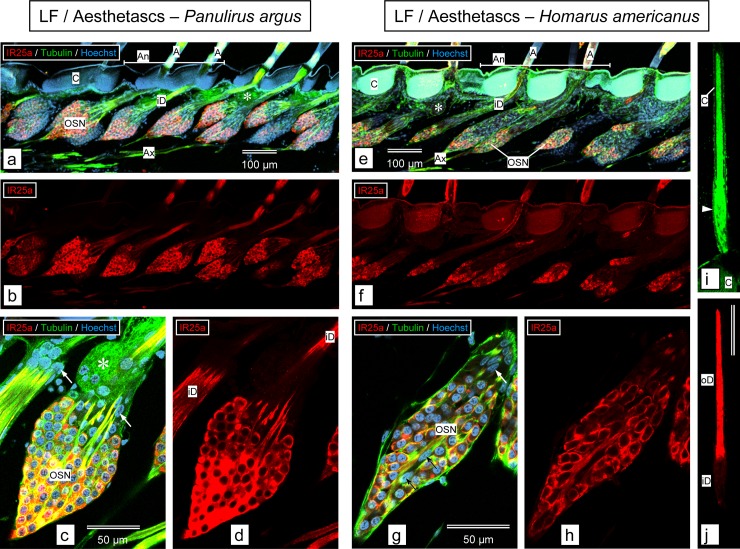Fig 6. Immunolabeling with anti-HaIR25a in the aesthetasc-bearing tuft region of the lateral flagellum of the antennule.
a–d. Panulirus argus. e–j. Homarus americanus. a, b, e, f. Sagittal sections through the medial plane of the tuft region of lateral flagellum labeled with anti-HaIR25a (red), anti-tubulin (green), and Hoechst 33258 (blue) at low magnification (maximum intensity projections of confocal image stacks). Scale bar in a also applies to b, scale bar in e also applies to f. a and b adapted from Kozma et al. (2018) [11]. a, e. Overlay of all 3 confocal channels. b, f. anti-HaIR25a channel. Overall organization of aesthetascs is similar in both species: two rows of aesthetasc setae (A) arise from the autofluorescent (blue in P. argus, blue and green in H. americanus) cuticle (C) of an annulus (An + horizontal bar). Each aesthetasc seta is associated with a large cluster of olfactory sensory neuron (OSN) somata which are distinctly labeled by anti-HaIR25a and labeled with moderate intensity by anti-tubulin. Bundles of inner dendritic segments (iD) arising at the apical pole of the OSN clusters are labeled with moderate intensity by both antibodies. Bundles of axons (Ax) arising at the basal pole of OSN clusters are intensely labeled by anti-tubulin labeled with moderate intensity by anti-HaIR25a. Tegumental glands (asterisks) are located between bundles of inner dendritic segments. OSN clusters in H. americanus are more elongated than in P. argus and contain fewer OSNs. c, d, g, h. Sagittal section through OSN clusters labeled with anti-HaIR25a (red), anti-tubulin (green), and Hoechst 33258 (blue) at high magnification (confocal images–maximum intensity projection of confocal image stacks with a total thickness of about 1 μm). Scale bar in c also applies to d, scale bar in g also applies to h. c, g. Overlay of all 3 confocal channels. d, h. anti-HaIR25a channel. The somata (OSN) of all OSNs identified by having almost spherical nuclei are distinctly labeled by anti-HaIR25a. Note that the overall shape of OSNs is close to spherical in P. argus but more elliptical in H. americanus. Somata of auxiliary cells (identified by having flat, elongated nuclei—arrows) are not labeled by anti-HaIR25a. In H. americanus, auxiliary cells are not only present at the apical pole of the OSN cluster (white arrows) but also in its center (black arrows). i, j. Horizontal section through an aesthetasc of H. americanus labeled with anti-HaIR25a (red) and anti-tubulin (green) (confocal images of one optical section of 1 μm thickness). Scale bar in j (100 μm) also applies to i. Note that anti-tubulin non-specifically labeled cuticle (C) in addition to dendrites enclosed in the thin cuticular tube of the aesthetasc seta. The bulge at the bottom of the seta (arrowhead) indicates the transition region between inner dendritic segments (iD) and outer dendritic segments (oD). Note that labeling intensity of anti-HaIR25a is considerably higher in oD compared to iD.

